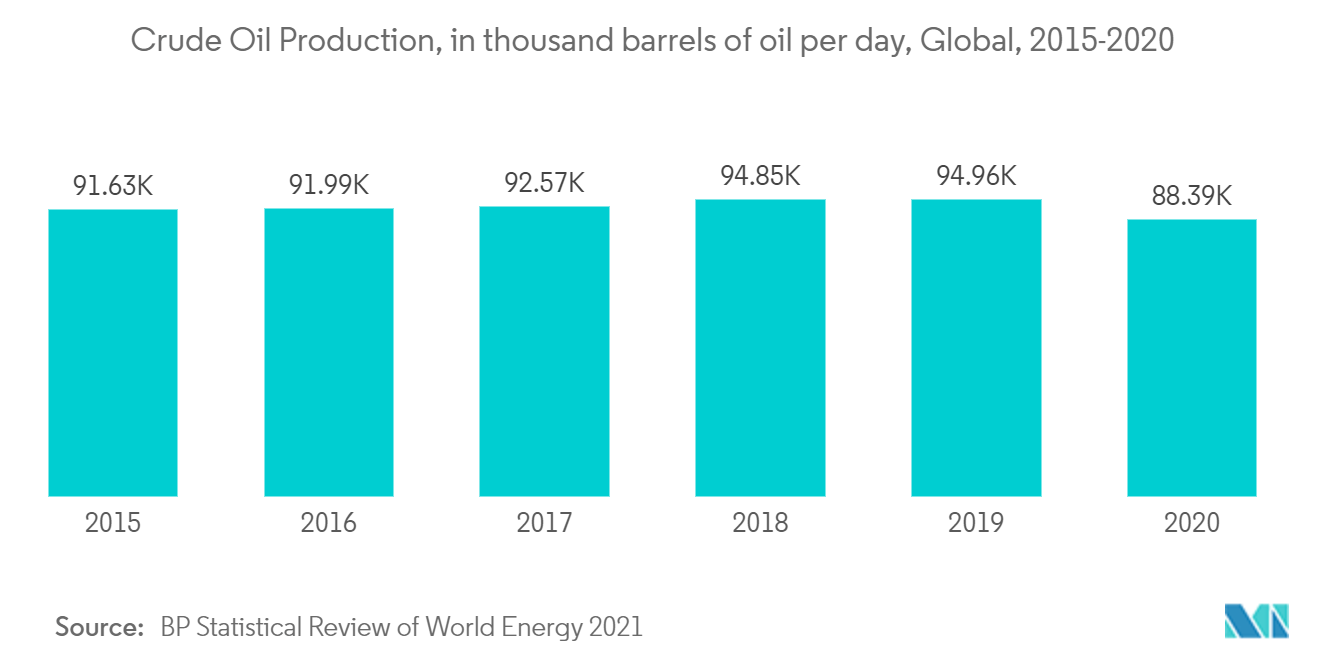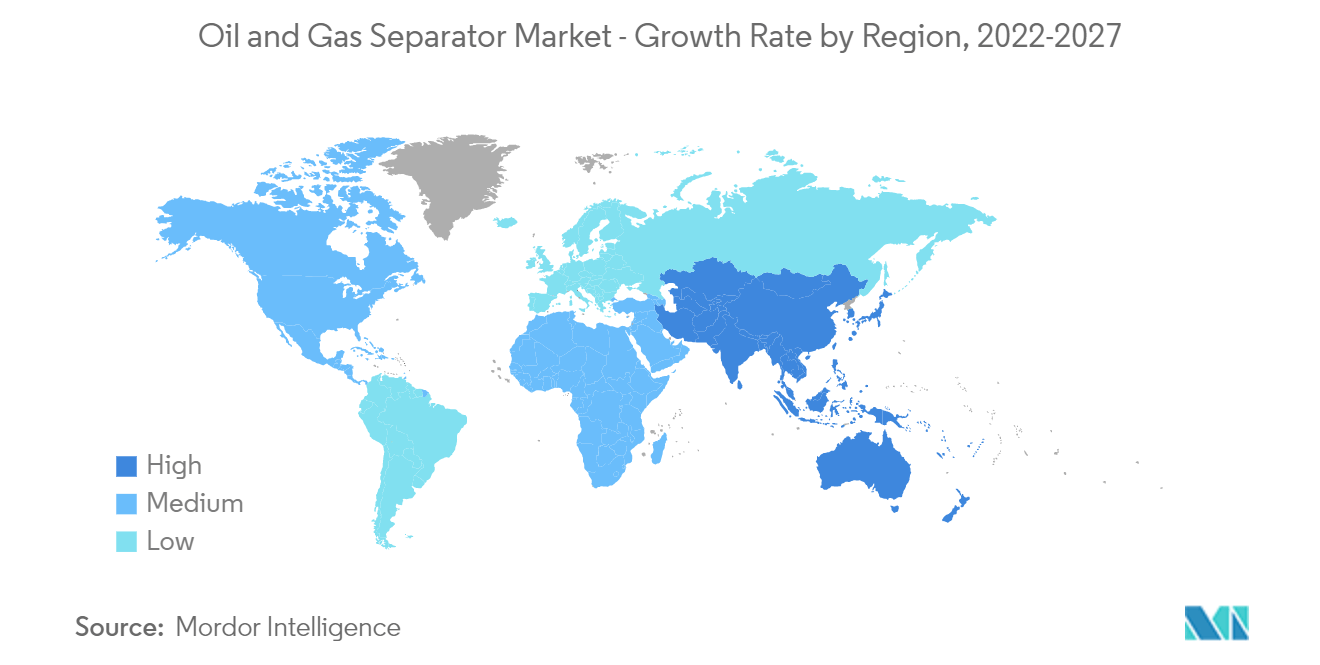Market Trends of Oil and Gas Separator Industry
This section covers the major market trends shaping the Oil & Gas Separator Market according to our research experts:
Upstream Sector to Dominate the Market
Oil and gas separator is a pressurized vessel used to separate oil, gas, water, sand, salts, and other solid sediments. The separation step is required to separate oil and gas from the unwanted water and sediments. In the upstream segment, the separator is used right after the crude oil and gas are produced from the well and come to the surface.
The increasing number of wells at new fields and deepwater explorations require the installation of new group gathering stations (GGS) at the sites. Thus, a higher number of separators are required to separate hydrocarbons before their storage or transportation.
In 2020, the global crude oil production was 88391 thousand barrels per day, which was higher than the production in 2017, which had amounted to 92568 thousand barrels per day. The increase in production suggests a requirement for higher installation capacity of separators to prevent overloading of the existing ones and prevent their failures.
In January 2022, McDermott International was awarded a contract by Woodside, as the operator on behalf of Scarborough Joint Venture, for the engineering, procurement, construction, installation, and commissioning (EPCIC) services for its Floating Production Unit (FPU) in offshore Western Australia. The integrated scope includes design, fabrication, gas separation, transportation, etc.
Moreover, in January 2021, Total and Apache Corporation announced that they had made a new significant offshore oil and gas discovery at the Keskesi East-1 well, in Block 58, off the Suriname Coast. This follows previous discoveries at Maka Central, Sapakara West, and Kwaskwasi.
Hence, owing to the above points, the upstream segment is likely to dominate the oil and gas separator market during the forecast period.

Middle-East and Africa to Dominate the Market
Middle-East and Africa held a significant share of the market studied owing to its accounting for the highest crude oil production in the world. In 2020, Middle-East and Africa produced crude oil of 34529 thousand barrels per day, which accounted for approximately 39.1% of the global crude oil production.
Countries in Middle-East and Africa have changed their spending pattern and started to invest a significant amount of money in their crude oil and natural gas refining capacity.
In 2020, more than 26 oil & gas projects worth about USD 50 billion were delayed in the Middle-East alone. These projects are expected to resume in 2021, while projects sanctioned from 2021 to 2026 are expected to drive the region's total oil and gas separators market during the forecast period.
In March 2022, Schlumberger announced a major contract from Saudi Aramco for integrated drilling and well construction services in a gas drilling project. The project scope includes drilling rigs, gas separations, and logging while drilling.
Moreover, in November 2020, the Supreme Petroleum Council (SPC) of Abu Dhabi approved the UAE state-run oil company Abu Dhabi National Oil Company's (ADNOC) investment program worth USD 122 billion for 2021-2025. The plan's approval was followed by SPC's announcement of 22 billion barrels of recoverable unconventional oil resources and an addition of two billion barrels of conventional oil reserves, which, in turn, is expected to create opportunities for the use of oil and gas separators in this region.
Hence, due to the above factors, Middle-East and Africa is expected to dominate the oil and gas separator market during the forecast period.


